LEARN
About Matcha
History of Matcha
While the delicious flavours and nutritional benefits of Matcha is only just been realised in western nations, the actual history of this Matcha goes back centuries
Tea leaves were first steamed and formed into tea bricks for storage and trade in China during the Tang Dynasty (618–907). The tea would be prepared by roasting and then pulverizing it. The resulting tea powder was then prepared in hot water with added salt.
During the Song Dynasty (960–1279), production methods changed and the making of powdered tea from steam-prepared dried tea leaves became the preferred method. In order to preserve color and freshness, tea leaves were steamed first then dried and ground into a fine powder called ‘tea mud’. The tea mud was then placed in molds where it was pressed and left to harden at which point it was dried in the sun and then baked. This method of production made it easier to store and transport the tea. It was also at this time that preparing the tea by whipping the powder together with hot water in a bowl became popular.
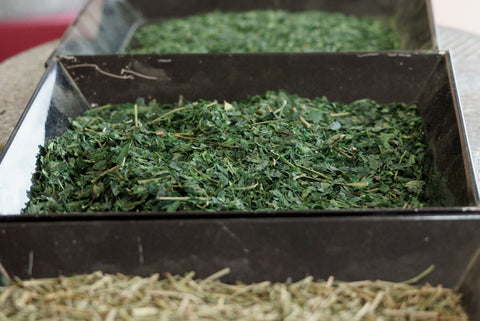
Tea was first introduced to Japan by priests and envoys sent to China to learn about its culture in the early 9th century. Although powdered tea was slowly forgotten in China, in Japan it continued to form an important part of rituals in Zen monasteries. The priests brought seeds back with them and started growing tea plants in Japan. Soon the Japanese Zen priests began their own tradition of cultivating, processing and preparing powdered green tea. These were the very early beginnings of would be known today as matcha.

In the 12th century, the Zen priest Eisai was highly influential to the development of Japanese tea culture. The oldest tea specialty book in Japan, Kissa Yōjōki (“How to Stay Healthy by Drinking Tea”) was written by Eisai. The first sentence states, “Tea is the ultimate mental and medical remedy and has the ability to make one’s life more full and complete”.
Eisai was also instrumental in introducing tea consumption to the Samurai class. Eisai learned that the Shogun had a habit of drinking too much every night and so he presented the book he had written to the general, lauding the health benefits of tea drinking. The custom of tea drinking soon became popular not only among the warrior class, but it was also a staple among all cultured people in Japan. It was a drink for the nobility and the Buddhist priesthood alike.
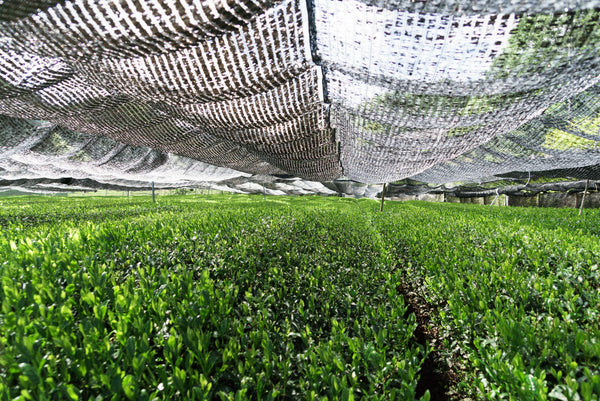
Later, in the 16th century another Zen-master, Sen-no-Rikyu, further shaped the culture of tea in Japan and is considered one of the key figures in the development of the Japanese Tea Ceremony. Many of the aspects of the ceremony that he placed emphasis on persist today, such as, rustic simplicity, directness of approach and honesty of self. He is also associated with the development of the wabi aesthetic in the tea ceremony.

As the tea ceremony became more desirable an art form, matcha continued to become more popular among the powerful classes in Japan and for centuries, matcha remained the secret tea of Japan’s elite. It was extremely valuable with only a handful of merchants approved to process and create it. By contrast, the general population could only drink what was called, Bancha, which has a browner color than the bright green of matcha and a much more bitter tasteIn the mid 18th century, however, the uji green tea processing method was invented. This method, still in practice today, revolutionized the production of matcha and allowed for a much more efficient process, which finally brought this highly revered tea to the people. Along with this development, tea plantation owners in Japan continued to perfect the process for developing and maximizing the most potent and therapeutically beneficial matcha.
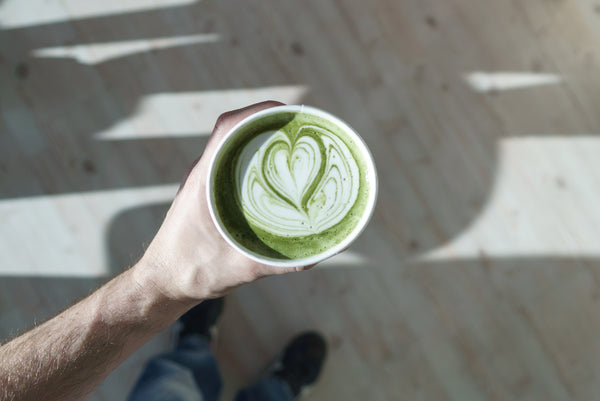
Today, matcha is not only a highly treasured specialty green tea but also frequently used in Japanese cooking and baking as well as in health foods and western style drinks such as matcha lattes and smoothies.
Further reading and references:
- History of Tea in Japan
- Tea Cermony
- Eisai
- Sen No Ryku
- Emperor Saga - The first Emperor in Japan to drink tea according to legend.
- Zen
Benefits of Matcha
Matcha tea has a long and distinguished history in the East, spanning early Chinese Dynasties all the way to Zen Buddhist Monks in Japan. While these ancient beginnings are to be cherished, the broad array of health benefits that matcha provides is something we can truly embrace today.
Japanese tea leaves grow in the shade to increase chlorophyll content. These chlorophyll-rich leaves are then handpicked, steamed, dried and ground into a fine green powder. Because matcha is straight, stone-ground tea leaves, matcha provides you with green teas powerful arsenal of vitamins, minerals, antioxidants, and amino acids in a way no other green tea can.
Instead of throwing away the leaves, you ingest all their nutrients. In fact, a single serving of matcha would be the equivalent of at least ten cups of brewed green tea. The powers of matcha are manifold a cancer-fighter, a fat-burner, a stress-reducer, and much more, matcha leaves other teas far behind.
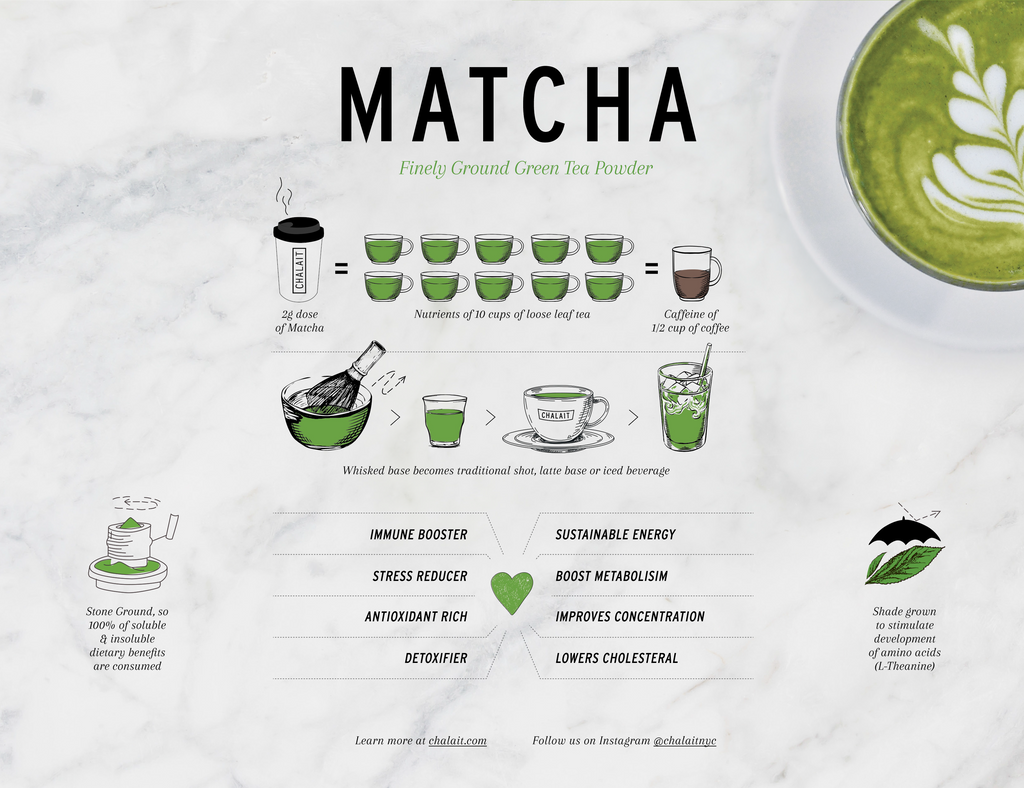
1) Cancer Fighter
Matcha contains potent antioxidants called catechins, which aren’t found in other foods. The most powerful catechin found in green tea is EGCg (epigallocatechin-3-gallate), which is thought to be a powerful anti-carcinogen. Most importantly, EGCg and other catechins counteract the effects of free radicals from the likes of pollution, UV rays, radiation, and chemicals, which can lead to cell and DNA damage.
See also: Does Matcha help with colds?

A 2003 University of Colorado study confirmed that drinking 1 cup of matcha green tea has 137 times the amount of antioxidant EGCg compared to a conventional cup of green tea.
2) Anti-Ager
One of biggest the buzzwords in nutrition, antioxidants, are naturally occurring chemical compounds that prevent aging and chronic diseases. When it comes to actual antioxidant content, the numbers for matcha are off the charts.

3) Heart Disease Preventer: Lowers LDL Cholesterol
A 2011 study featured in the American Journal of Clinical Nutrition demonstrated that administration of green tea beverages or extracts significantly lowered serum total cholesterol and LDL cholesterol concentrations.
4) Fat Burner
Matcha has been shown to boost metabolism and burn fat and as such is a great addition to any weight loss program because of it.

A 1999 study featured in the American Journal of Clinical Nutrition demonstrated that green tea extract rich in catechins has thermogenic properties and promotes fat oxidation beyond that explained by the tea’s caffeine content. It was found that thermogenesis (the body’s rate of burning calories) increased from 8-10% to 35-43% of daily energy expenditure. Another study demonstrated that exercising immediately after drinking matcha green tea resulted in 25% more fat burning during exercise.
At the same time, matcha does not put any stress on the body. It does not raise blood pressure or heart rate, making it a safe alternative to questionable quick fixes or pharmaceuticals ridden with side effects.
5) Stress Reducer
Matcha is rich in L-Theanine, a rare amino acid that actually promotes a state of relaxation and well-being . While L-Theanine is common in all tea, matcha may contain up to five times more than common black and green teas. It has been used an aid to meditation practice and during long hours of sitting, monks would drink matcha to remain alert yet calm.
Read more: How matcha helps with anxiety

The combination of L-theanine and caffeine has been shown to promote faster simple reaction time, faster numeric working memory reaction time and improved sentence verification accuracy.
6) Energy Booster
Matcha drinkers often experience a boost of energy throughout the day. It’s an ideal substitute for coffee because it provides an energy shot without the headaches you might get from a coffee crash. No jitters, no nervousness, no upset stomach, and no crash. All of this thanks to matcha’s minimal amount of caffeine and it’s unique mix of antioxidants and nutrients.
7) Detoxifier
Practiced for centuries by many cultures around the world detoxification is about resting, cleaning and nourishing the body from the inside out. By removing and eliminating toxins, then feeding your body with healthy nutrients, detoxifying can help protect you from disease and renew your ability to maintain optimum health.
Learn more: Detoxing with Matcha

Matcha can help to safely cleanse and purge the body of harmful elements. Chlorophyll is a powerful detoxifier, helping to eliminate both chemicals and heavy metals from the body. And because matcha is carefully shade-grown, it is substantially richer in chlorophyll than other green teas, making it a superior daily detox.
8) Fiber
Matcha green tea leaves contain a high level of dietary fiber.
Further reading and references:
University of Colorado: Matcha and Catechins
- Nagoya University Department of Psychology: L-Theanine and Stress Responses
- University of Shizuoka: L-Theanine and Relaxation Effects
- American Journal of Clinical Nutrition: Green Tea Extract and Fat Loss
- Livestrong.com: Benefits of Matcha
- Livestrong.com: Green Tea and Belly Fat

Matcha Preparation
These days people drink matcha more and more in everyday situations, however, the traditional preparation developed almost entirely alongside the Japanese tea ceremony. The ceremony itself centers around the ritualistic preparation, serving, and drinking of matcha and the procedures for the ceremony can be quite formal. They vary from tea house to tea house as well as with the time of year, the time of day and the venue, among other considerations.
The preparation of the matcha itself, however, falls into two main forms: thick (koicha) and thin (usucha). It’s worth noting at this point that it’s not advisable to make the koicha preparation using usucha matcha and vice versa so you should be aware of which form of matcha powder you’re using.

Traditional Matcha Utensils:
There is a wide range of traditional utensils with different styles and motifs available for the preparation of matcha but the the key ones include:
- Matcha Bowl (Chawan).
- Bamboo Matcha Whisk (Chasen).
- Bamboo Matcha Scoop (Chashaku).
For both types of matcha preparations, the utensils should be preheated by filling the bowl about 1/3 with hot water then placing the whisk face down into the bowl to wet the tips of the prongs. Once the bowl has been thoroughly preheated and dried out, a small amount of matcha is placed into the matcha bowl using the bamboo scoop.
The appropriate amount of hot water (75c-85c) is then added to the bowl at which point the mixture is whisked to a uniform consistency using the bamboo whisk. There should be no lumps left in the liquid, and there should be no ground tea remaining on the sides of the bowl.
Thin (Usucha) Tea preparation:
This is prepared using approximately half a teaspoon of matcha and approximately 2.5 oz of hot water per serving. Whisk the matcha briskly in a W motion until the matcha has a thick froth with many tiny bubbles on the surface. Usucha creates a lighter and slightly more bitter tea.
Thick (Koicha) Tea preparation:
This tea requires significantly more matcha and less water than the usucha. Use approximately one teaspoon of matcha and approximately 1.5 oz of hot water per serving. Unlike usucha, for the preparation of koicha, the idea is to avoid making a frothy consistency by using a gentle blending motion instead of fast whisking motion. A gentle combination of left/right, up/down, and a circular motions are used to make a tea with a thick consistency resembling that of liquid honey. It should be reasonably thick, smooth and without froth. Koicha is normally made with matcha from older tea trees (exceeding thirty years) and thus actually produces a milder and sweeter tea than usucha.
Matcha Guide

Pre-work Out Fuel with Matcha
Combining a little bit of caffeine with your daily work out is actually beneficial to your overall exercise and health. Studies have shown that caffeine assists with better blood flow,...
Pre-work Out Fuel with Matcha
Combining a little bit of caffeine with your daily work out is actually beneficial to your overall exercise and health. Studies have shown that caffeine assists with better blood flow,...

Matcha Culture: Everything You Need to Know Abo...
A great wrap up of all things matcha. A big thanks to Rochelle Bilow (@RochelleBilow) for the writing this excellent article. © dandalker | CHALAIT “It’s no secret we at Bon Appétit love...
Matcha Culture: Everything You Need to Know Abo...
A great wrap up of all things matcha. A big thanks to Rochelle Bilow (@RochelleBilow) for the writing this excellent article. © dandalker | CHALAIT “It’s no secret we at Bon Appétit love...
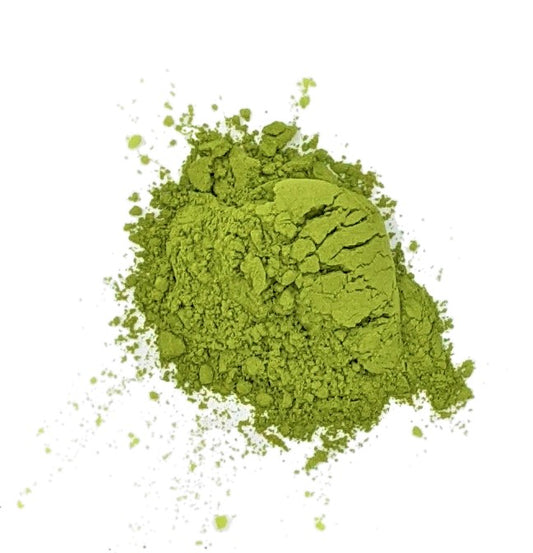
Matcha Coconut Oil Face Mask
Treat yourself to a nourishing Matcha and coconut oil face mask. This recipe will hydrate your skin and shrink large pores. Your skin will love you for this
Matcha Coconut Oil Face Mask
Treat yourself to a nourishing Matcha and coconut oil face mask. This recipe will hydrate your skin and shrink large pores. Your skin will love you for this

